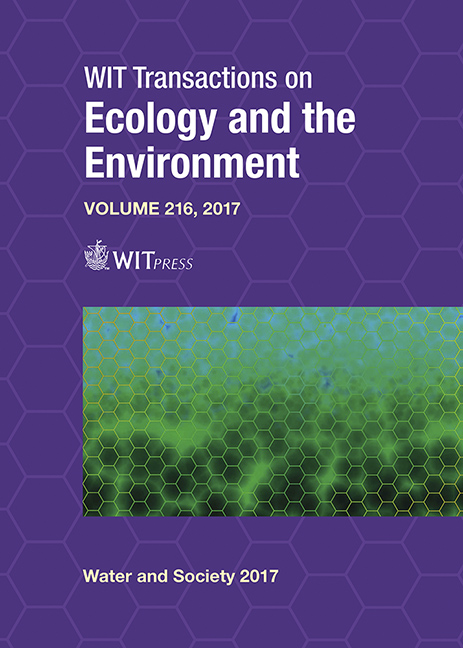EFFECT OF TIO2 LOADING ON POWDER-ACTIVATED CARBON IN ADVANCED DRINKING-WATER TREATMENT
Price
Free (open access)
Transaction
Volume
216
Pages
9
Page Range
203 - 211
Published
2017
Paper DOI
10.2495/WS170191
Copyright
WIT Press
Author(s)
CORINA ORHA, CARMEN LAZAU, DANIEL URSU, FLORICA MANEA
Abstract
The viability of TiO2 effect under UV irradiation for the advanced drinking-water treatment through sorption and photocatalysis processes using powdered activated carbon was evaluated in this work. Three types of TiO2-modified powder-activated carbon materials characterized by three degrees of TiO2 loading were tested as sorbent/photocatalyst for the removal of humic acids (HA) from water, which represents the important component of natural organic matter (NOM) considered as trihalomethans precursor for the stage of drinking water disinfection with chlorine. The materials were synthesised by sol–gel method, characterized morphologically by X-ray diffraction (XRD) and scanning electron microscopy (SEM) and tested as sorbent/photocatalyst for HA removal. The sorption/photocatalysis process was assessed in terms of humic removal efficiency. The kinetics studies based on the pseudo-second-order equation related to sorption/photocatalysis were performed and the role of TiO2 was evidenced in both processes. The great sorption characteristics of powdered activated carbon for humic acid were not enhanced by TiO2 presence. However, TiO2 presence favoured the photocatalysis process and diminished the fouling effect on the material surface during photocatalysis process, assuring the self-cleaning characteristics of the powdered activated carbon and as a consequence, the longer lifetime of the material.
Keywords
water treatment, sorption, photocatalysis, TiO2, activated carbon





